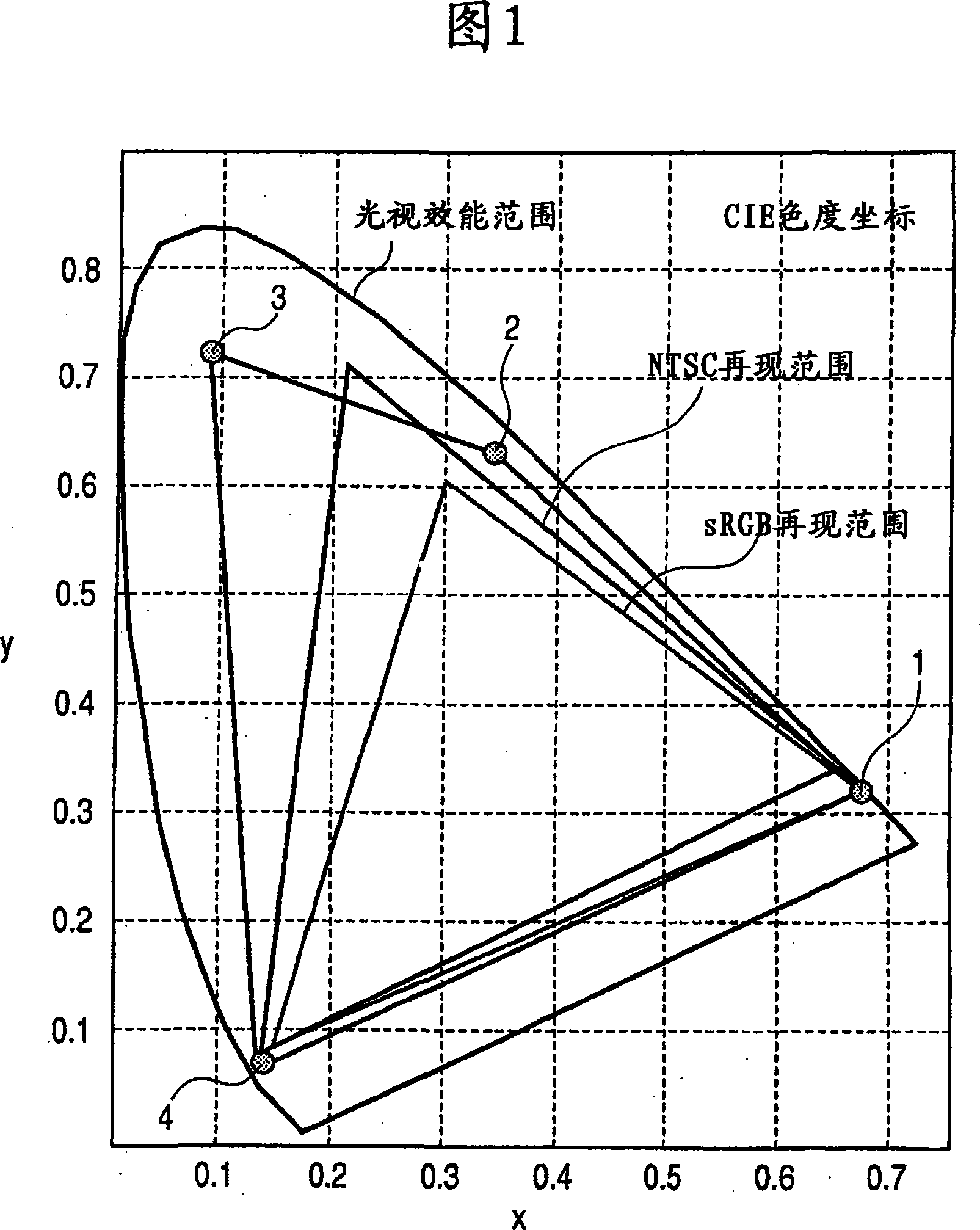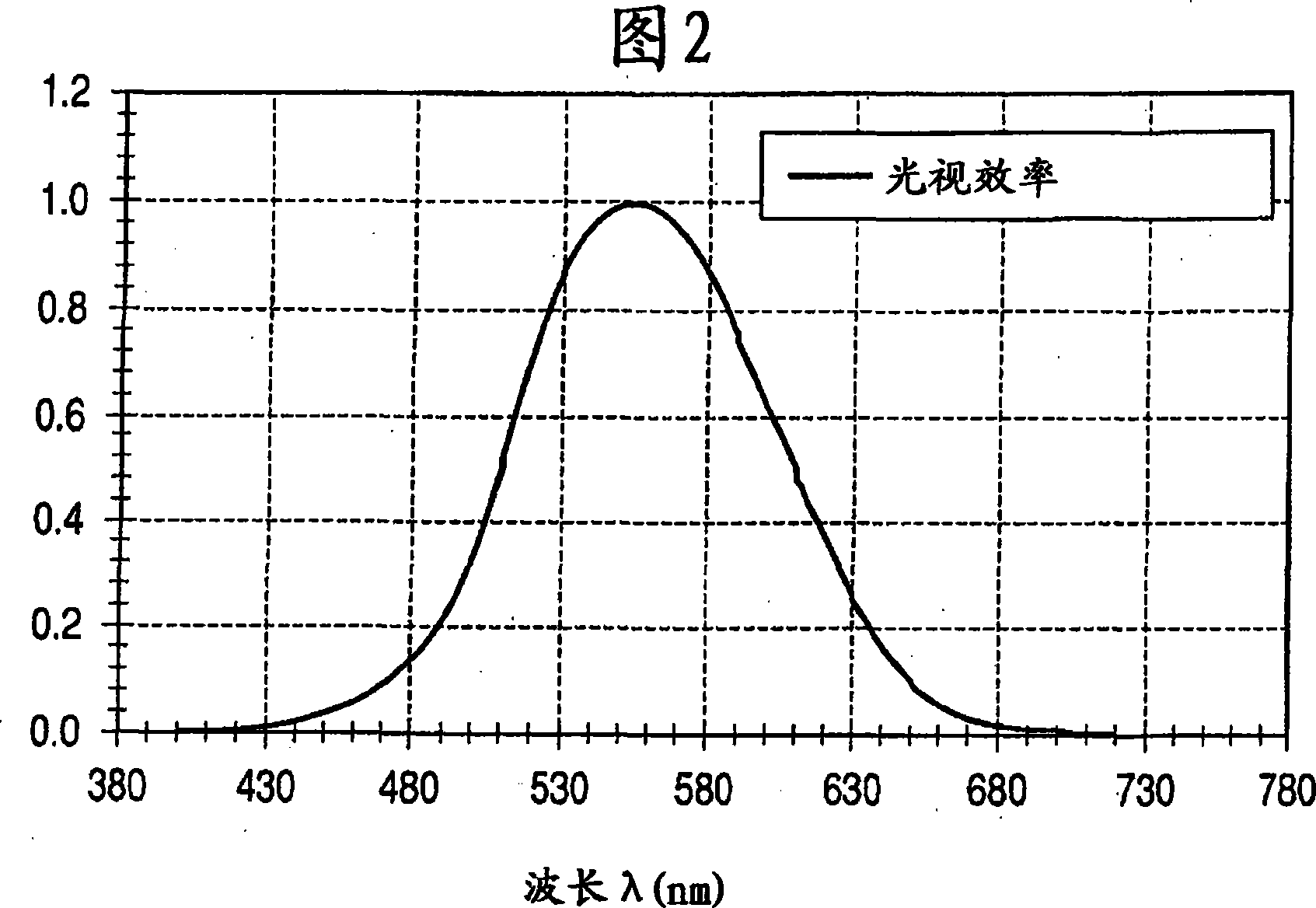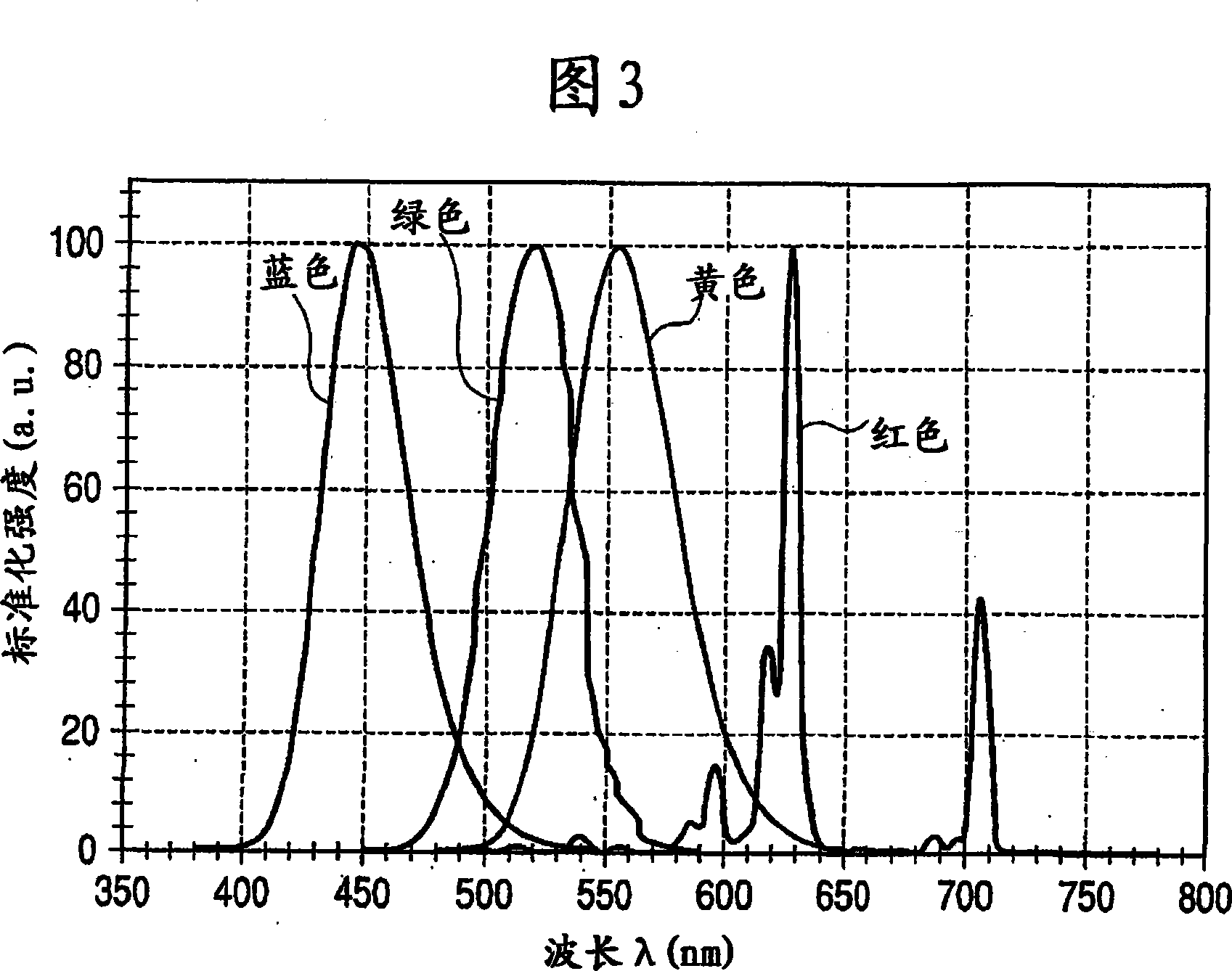Multiprimary color display
A display, primary color technology, used in static indicators, image/graphic display tubes, cathode ray tube indicators, etc.
- Summary
- Abstract
- Description
- Claims
- Application Information
AI Technical Summary
Problems solved by technology
Method used
Image
Examples
example 1
[0092] The FED is manufactured from phosphors of four primary colors including yellow in addition to R, G, and B.
[0093] In this example, as the phosphor material, Y 2 o 2 S: Eu for red, CaAl 2 S 4 :Eu for green, ZnS:Ag, Cl for blue, CaGa 2 S 4 :Eu is used for yellow.
[0094] Here, the areas of the emission ranges of the respective colors are set to be the same.
example 2
[0109] This four-primary-color FED was fabricated in the same manner as in Example 1.
[0110] In Example 1, the area of each pixel element is set to be the same. But in Example 2, the red emission range is set to 0.9 times the red range in Example 1, the green emission range is set to 0.9 times the green range in Example 1, and the blue emission range is set to 1.3 times the blue range in Example 1 , the yellow light emission range is set to 0.9 times the yellow range in example 1. FEDs were manufactured under such conditions.
[0111] The display color range of the FED thus fabricated was 124% of the color reproduction range displayed based on the NTSC signal. In addition, compared with that in Example 1, the emission luminance was increased by 46%.
example 3
[0113] This four-primary-color FED was fabricated in the same manner as in Example 1.
[0114]But in Example 3, the red emission range is set to 1.1 times the red range in Example 1, the green emission range is set to 0.9 times the green range in Example 1, and the blue emission range is set to 1.28 times the blue range in Example 1 , the yellow light emission range is set to 0.72 times the yellow range in Example 1. A display unit of one pixel was manufactured under this condition. Incidentally, the design of each luminous range is obtained by converting the value calculated by adjusting the luminance of each color to satisfy the CIE chromaticity coordinates of the designed white when the same power is supplied.
[0115] The display color range of the FED thus fabricated was 124% of the color reproduction range displayed based on the NTSC signal. In addition, the emission luminance was increased by 59% compared with that in Example 1 manufactured as a comparison.
[0116] ...
PUM
| Property | Measurement | Unit |
|---|---|---|
| wavelength | aaaaa | aaaaa |
Abstract
Description
Claims
Application Information
 Login to View More
Login to View More - R&D
- Intellectual Property
- Life Sciences
- Materials
- Tech Scout
- Unparalleled Data Quality
- Higher Quality Content
- 60% Fewer Hallucinations
Browse by: Latest US Patents, China's latest patents, Technical Efficacy Thesaurus, Application Domain, Technology Topic, Popular Technical Reports.
© 2025 PatSnap. All rights reserved.Legal|Privacy policy|Modern Slavery Act Transparency Statement|Sitemap|About US| Contact US: help@patsnap.com



